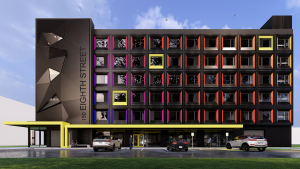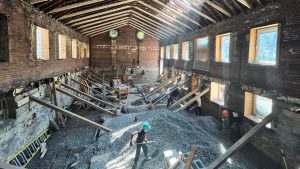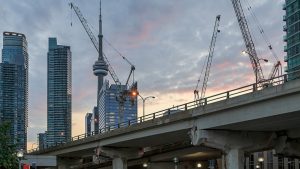Some of those shiny new towers that make for a striking skyline are proving to be a nuisance — even leading to safety concerns — due to the light they reflect onto neighbouring buildings, vehicles and people.
In one instance, the exterior trim of a parked car and bicycle seats were scorched by a solar reflection from a building; in other cases, drivers have been temporarily blinded by shiny buildings and air traffic controllers by rooftop solar panels.
Building designers and municipal planning departments need to understand the impact of solar reflections because problems are apt to crop up as cities increasingly densify, says Ryan Danks, a senior engineer at RWDI, an engineering and building science consultant.
“We regulate the shadows cast by our buildings, the wind effects,” he says. “It makes sense to include it (solar reflections) as part of a holistic analysis of how a building interacts with the natural environment and its neighbourhood,”
Danks is responsible at RWDI for studies involving ways the sun and built environment interact, but glare and reflection studies are a big part of what he does day to day.
He says while there is a growing movement away from the typical “glass box”-style building, the impact of glare-causing materials won’t be going away anytime soon.
“Specular reflections” are not new.
Highly glazed building envelopes have been commonplace for decades and the glare from buildings has generally been accepted as a part of city life.
Until recently.
Most cities don’t think about it until a problem happens
— Ryan Danks
RWDI
Wakeup calls started coming about five years ago after “some very high-profile failures,” resulting in “potentially dangerous outcomes,” he says.
In Calgary, a large stainless steel sculpture is reported to have burned holes in a person’s jacket, while a concave-shaped hotel in Las Vegas created “a focused point of very intense reflected solar energy that swept across a swimming pool area.”
Shading devices such as umbrellas were installed for the guests’ protection.
In London, England, focused reflected light from the glass curtainwall of a new office tower heated up, softened and ultimately damaged the exterior plastic trim of a parked car and “damaged bicycle seats,” says Danks.
“Most cities don’t think about it until a problem happens,” he says, noting that glare studies in London were increasingly requested from planners after the incident.
Other cities that require glare studies for new building designs often don’t prescribe the level of detail for assessment they should, he adds.
Danks says along with dangerous thermal effects, specular reflections can be temporarily blinding. In one example, solar panels on a roof reflected light into an air traffic control tower, affecting its occupants.
“The approach to fixing a problem depends on how far along you are when you find out there is a problem.”
Early in the design is when a consultant such as RWDI can provide the most assistance, starting with modifications to the building shape. While inward curves can focus light, causing heat build-up, buildings with flat facades might cause a distracting glare for drivers if the sun hits them at a shallow angle, he says.
Material type is also a key design factor, the consultant says, noting the type of glass and its coatings plus exterior metal finishes have varying effects.
Tweaks to the orientation of building elements can minimize or eliminate glare.
RWDI uses custom software to create “a predictive glare study” that pinpoints locations and times of glare as well as estimates the intensities of the reflections.
Danks says finding a design solution to glare on a building already constructed can be “very challenging.”
Adding shading devices such as canopies, fins or decorative screening to the facade are possible solutions and anti-reflective coatings on curtainwalls might help, but for warranty reasons most manufacturers prefer them on building interiors which limits their effectiveness.
Around the world, Boston is a leader in regulating dangerous glare, requiring studies for all new large projects.
“It also has a fairly sophisticated planning department that can tell the difference between a well-done study and one that is lacking,” he says.
Canada is lagging, he adds, although some cities such as Toronto have “very general guidelines for…portions of the city.”
For example, reflections that hit the Rogers Centre are not allowed.










Recent Comments
comments for this post are closed